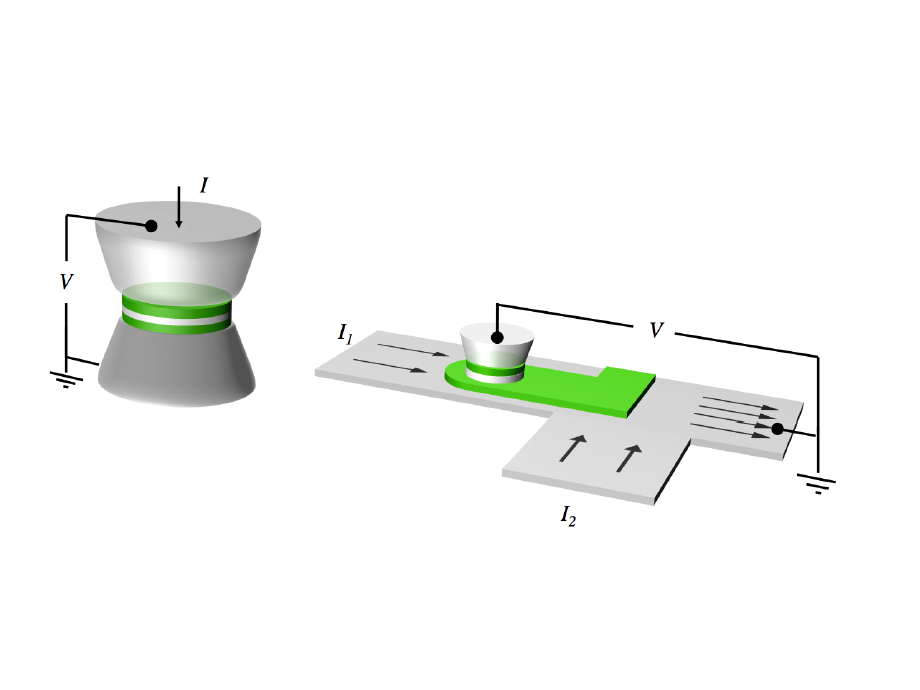Non-volatility is the main physical feature that fast memories, such as SRAM, are still lacking. Such memories could increase computing performance while reducing significantly the power consumption. The only viable option for sub-ns nonvolatile memory is the Spin-Orbit Torque Magnetic Random Access Memory (SOT-MRAM). The main roadblock towards the integration of the SOT-MRAM is that the reproducible bipolar switching requires the application of a static in-plane magnetic field. “Zero-field” SOT switching is still a challenge that motivates active research on this topic.
Within the “SMART Design” ERC-StG project, we are developing an innovative approach for this problem. We discovered that it is possible to determine the switching polarity by the shape of the magnetic free layer. This approach meets all the physical requirements for the SRAM replacement (scalability, switching time, switching current…), but the nano-fabrication of devices with complex shapes using standard UV lithography tools is difficult and expensive.
Within the ERC Proof of Concept project “SOFT” that just got funded in the framework of ERC-StG “SMART Design”, we propose to develop an innovative fabrication technique, adapted for complex shapes, based on ion irradiation. The technology provider Spin-ION Technologies developing a promising process for processing magnetoresistive stacks, is also directly involved in the project.
Contacts: Mihai MIRON

